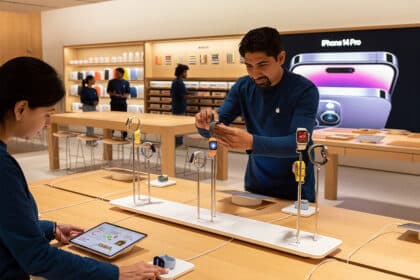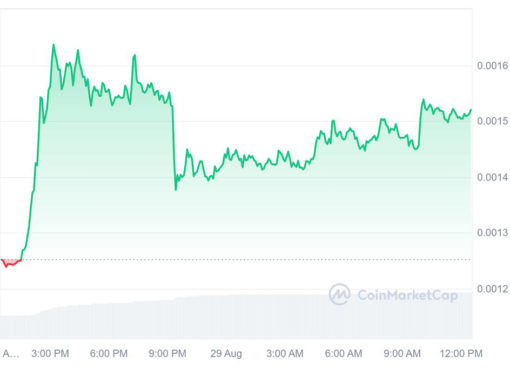Apple is reportedly getting more involved in producing its own cutting-edge screen displays and could launch the technology in 2025.
US tech giant Apple (NASDAQ: AAPL) is intensifying its plans to produce next-generation displays so that it can rely less on Korean rival Samsung. By getting involved in display-making technology, Apple also seeks to increase its own control over the supply of micro-LED screens.
Apple’s more involved approach to mass-producing micro-LED displays contrasts with the company’s standard policy of delegating to specialized makers. Usually, the consumer electronics giant provides the screen specifications and leaves the production to screen manufacturers.
Over the past decade, Apple has invested vast sums of money into developing micro-LED screens. The company’s outlay is expected to increase substantially with its new approach to mass-production of the essential tech component.
An inside source touched on Apple’s production agenda, saying:
“Apple has spent at least $1 billion on the R&D and samples for micro-LED technologies in the past nearly 10 years. It wants to secure more control over the next-gen display technologies for its future products.”
Furthermore, the source added:
“It doesn’t mean that Apple will always do the mass transfer on its own. But it shows how determined Apple is to allocate resources to have more control over [these] next-gen display technologies in its own hands.”
Apple Taps TSMC & LG as Raw Material Suppliers for Home-Grown micro-LED Displays
The Apple project has seen the California-based company partner with various suppliers for raw materials. These include Taiwan Semiconductor Manufacturing Co. (TSMC) for 12-inch wafers and LG Display for the substrates.
Sources familiar with the matter said Apple has Research & Development teams for displays in Japan, Taiwan, and the US. The company’s Taiwanese team has more than 1,000 people, following a 2020 government approval for Apple to expand its R&D plants.
Apple plans to introduce its emerging home-grown screen technology on its Apple Watch. However, the company aims to ultimately deploy the technology to its wildly popular iPhone brand. The reason is so Apple can leverage the flagship iPhone’s critical revenue source and much bigger sales volume. According to several people familiar with the matter, Apple eyes a 2025 launch year for its screen technology.
Micro-LED screens use less power and lighter composition than the current benchmark, organic light-emitting diode (OLED) displays. Furthermore, Micro-LEDs also provide better brightness performance outdoors and are deployable to curved or foldable surfaces.
Displays are among the most expensive components in Apple consumer devices. As a result, the company’s reliance on Samsung for cutting-edge screens has grown since the first iPhone OLED displays were launched in 2017. However, Apple has tried onboarding other suppliers in the ensuing time to reduce dependency on Samsung and improve its bargaining power. But regarding technology and quality stability, inside sources claim that Samsung still outpaces the other Apple screen suppliers.
Apple AR/VR Headset
In other recent Apple news, the multinational tech company could launch its highly-anticipated AR/VR headset in early June. Observers expect the augmented reality and virtual reality hardware offering to fast-track the emergence of the metaverse due to Apple’s excellent production track record.
Tolu is a cryptocurrency and blockchain enthusiast based in Lagos. He likes to demystify crypto stories to the bare basics so that anyone anywhere can understand without too much background knowledge.
When he’s not neck-deep in crypto stories, Tolu enjoys music, loves to sing and is an avid movie lover.




